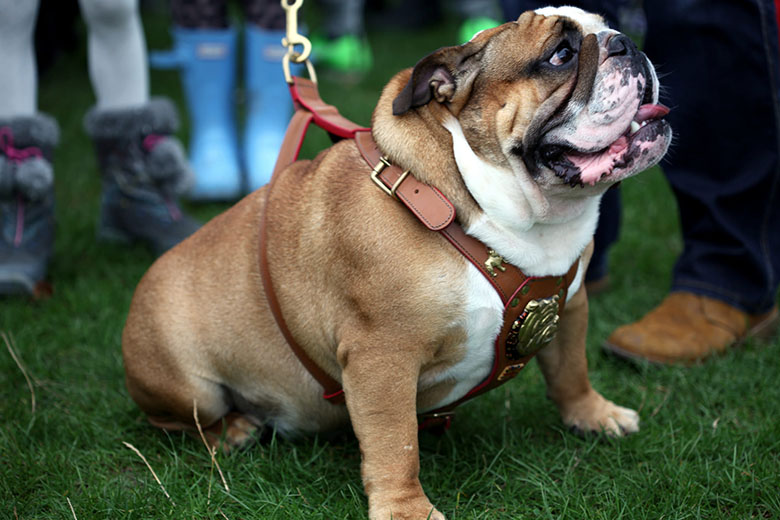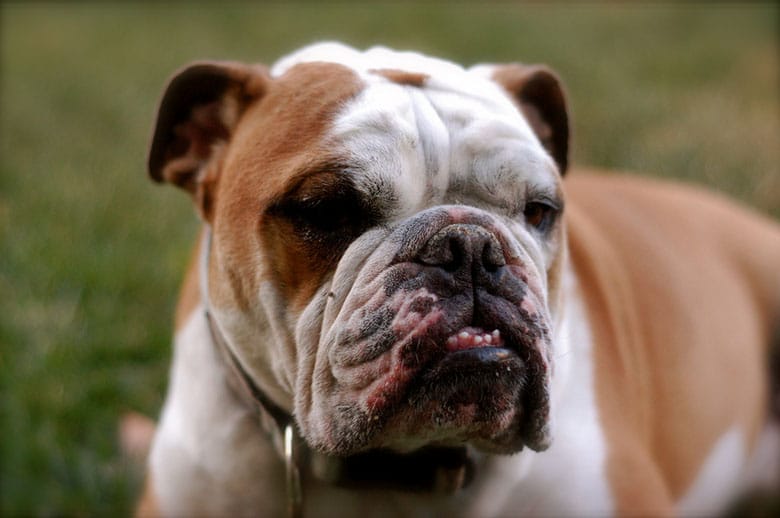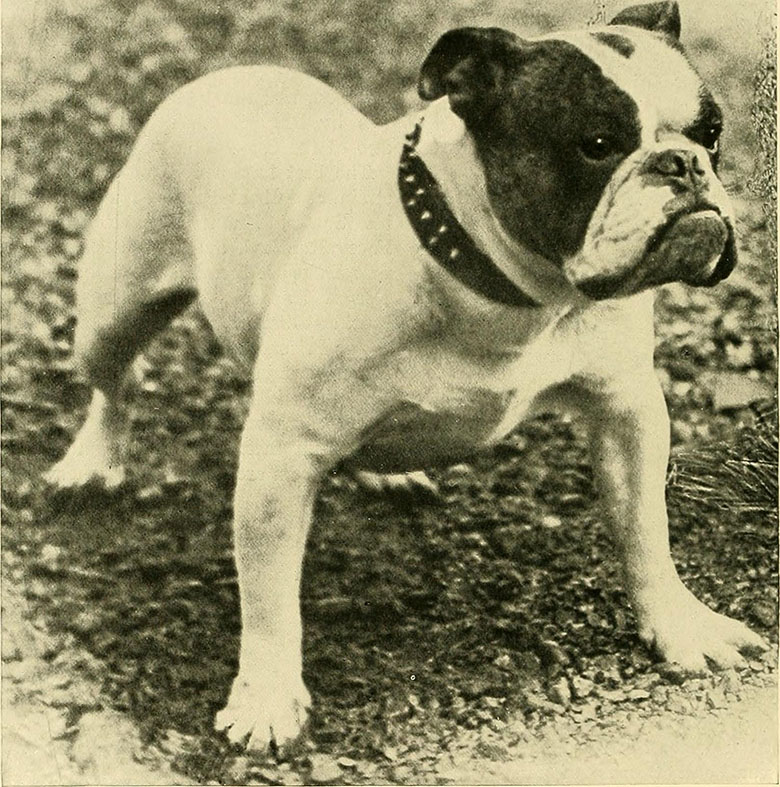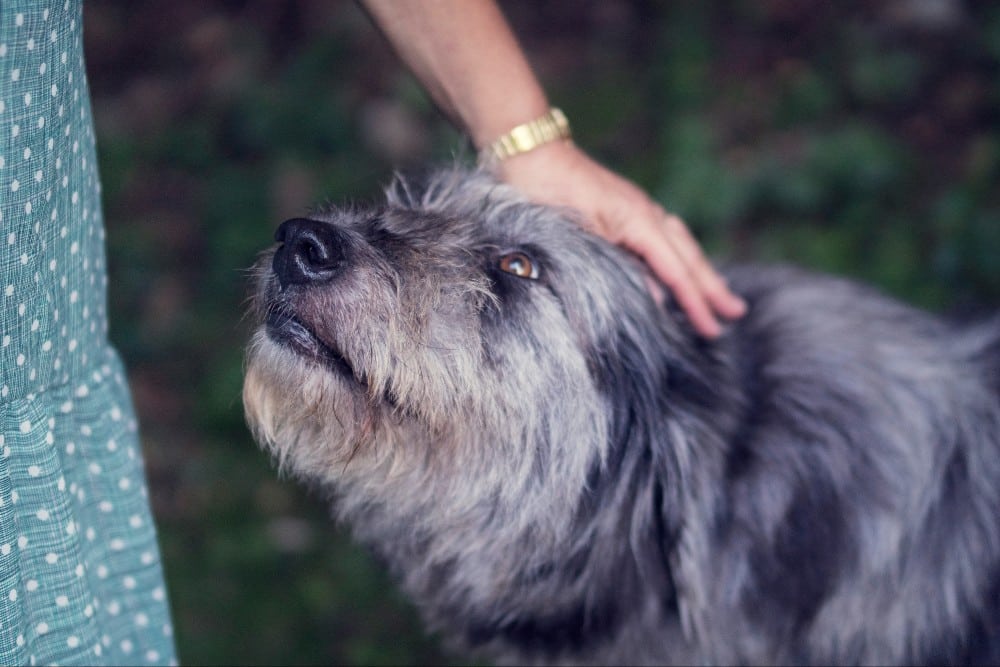Thanks to inbreeding practices, America’s fourth most popular dog runs the risk of extinction.
The English bulldog’s gene pool has decreased to the point that its lack enough of diversity is putting the future of the breed in jeopardy, according to research from the University of California, Davis.
This statement comes after scientists examined 102 bulldogs’ DNA. They discovered large swaths of the genome have changed over the years, with much of the alteration focused on the dog’s appearance. Over time, the dog’s snout has grown shorter and its body stalker, causing a whole plethora of problems, and many now labeled as “deformed,” according to Pedersen.
Today’s English bulldog suffers from breathing issues, hip dysplasia, allergies, skin issues (due to its folds), among other problems.
Related: A French Bulldog and Fish Play Kissy Face Every Day

Image via Flickr/Simon Lee
The dog’s lifespan is on average of 6 years, which is much less than the 10-16 years for other breeds, Niels Pedersen, a professor and the lead researcher at UC Davis School of Veterinary Medicine’s Center for Companion Animal Health, told This Dog’s Life. That coupled with the fact English bulldogs already have smaller litters, make the future of the already vulnerable breed uncertain.
Related: Our Top 6 Large Breed Dogs for Kids
Scientists worry that any additional altering will result in the dogs being unable to cope with all its ailments but it continues to happen, with some breeders now trying to change the color of the dog’s coat.
“English bulldog breeders appear to be more interested in adding recessive coat color mutations to increase puppy value than eliminating known deleterious mutations,” Pedersen writes in the report.
The obvious solution is to expand the gene pool — breeding out some of its health issues out — by mating the dog with other breeds, resulting in a higher quality of life for English bulldogs. Many breeders are opposed to this solution, as it would “spoil” the breed.





















